Volume 18
Displaying 1-21 of 21 articles from this issue
- |<
- <
- 1
- >
- >|
-
Article type: Cover
1958Volume 18 Pages Cover1-
Published: June 30, 1958
Released on J-STAGE: September 26, 2017
Download PDF (44K) -
Article type: Cover
1958Volume 18 Pages Cover2-
Published: June 30, 1958
Released on J-STAGE: September 26, 2017
Download PDF (44K) -
Article type: Article
1958Volume 18 Pages 1-7
Published: June 30, 1958
Released on J-STAGE: September 26, 2017
Download PDF (486K) -
Article type: Article
1958Volume 18 Pages 9-13
Published: June 30, 1958
Released on J-STAGE: September 26, 2017
Download PDF (383K) -
Article type: Article
1958Volume 18 Pages 15-18
Published: June 30, 1958
Released on J-STAGE: September 26, 2017
Download PDF (381K) -
Article type: Article
1958Volume 18 Pages 19-24
Published: June 30, 1958
Released on J-STAGE: September 26, 2017
Download PDF (404K) -
Article type: Article
1958Volume 18 Pages 25-31
Published: June 30, 1958
Released on J-STAGE: September 26, 2017
Download PDF (699K) -
Article type: Article
1958Volume 18 Pages 33-37
Published: June 30, 1958
Released on J-STAGE: September 26, 2017
Download PDF (1061K) -
Article type: Article
1958Volume 18 Pages 39-41
Published: June 30, 1958
Released on J-STAGE: September 26, 2017
Download PDF (704K) -
Article type: Article
1958Volume 18 Pages 43-48
Published: June 30, 1958
Released on J-STAGE: September 26, 2017
Download PDF (508K) -
Article type: Article
1958Volume 18 Pages 49-54
Published: June 30, 1958
Released on J-STAGE: September 26, 2017
Download PDF (687K) -
Article type: Article
1958Volume 18 Pages 55-62
Published: June 30, 1958
Released on J-STAGE: September 26, 2017
Download PDF (1591K) -
Article type: Article
1958Volume 18 Pages 63-66
Published: June 30, 1958
Released on J-STAGE: September 26, 2017
Download PDF (447K) -
Article type: Article
1958Volume 18 Pages 67-71
Published: June 30, 1958
Released on J-STAGE: September 26, 2017
Download PDF (411K) -
Article type: Article
1958Volume 18 Pages 73-76
Published: June 30, 1958
Released on J-STAGE: September 26, 2017
Download PDF (567K) -
Article type: Article
1958Volume 18 Pages 77-78
Published: June 30, 1958
Released on J-STAGE: September 26, 2017
Download PDF (238K) -
Article type: Article
1958Volume 18 Pages 79-81
Published: June 30, 1958
Released on J-STAGE: September 26, 2017
Download PDF (382K) -
Article type: Article
1958Volume 18 Pages 83-88
Published: June 30, 1958
Released on J-STAGE: September 26, 2017
Download PDF (597K) -
Article type: Appendix
1958Volume 18 Pages App1-
Published: June 30, 1958
Released on J-STAGE: September 26, 2017
Download PDF (17K) -
Article type: Cover
1958Volume 18 Pages Cover3-
Published: June 30, 1958
Released on J-STAGE: September 26, 2017
Download PDF (55K) -
Article type: Cover
1958Volume 18 Pages Cover4-
Published: June 30, 1958
Released on J-STAGE: September 26, 2017
Download PDF (55K)
- |<
- <
- 1
- >
- >|
